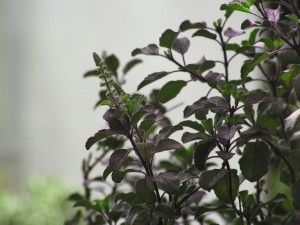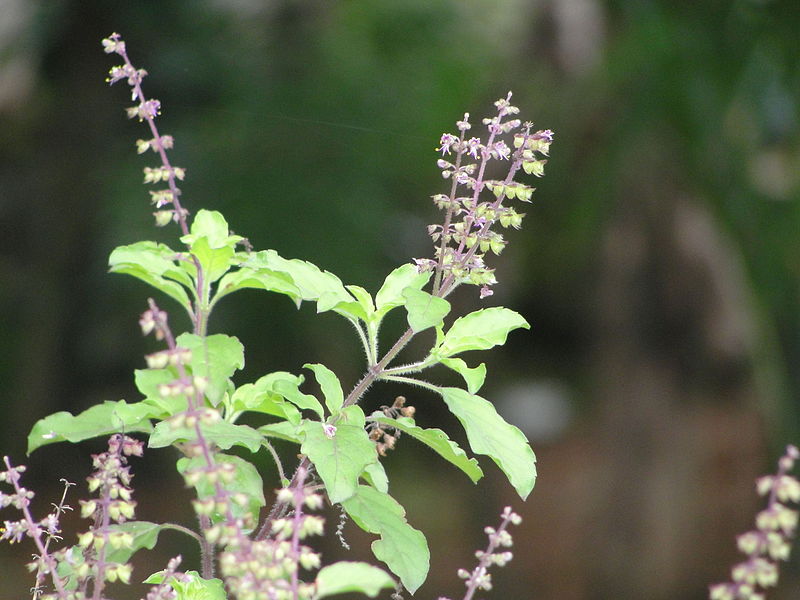
Holy Basil with Green Foliage
Holy basil (Ocimum tenuiflorum), also known as Tulsi, is native to India where it is considered to be a holy herb and is used in the worship of Hindu deities. It has been used for thousands of years in Ayurvedic medicine for the treatment of stress and is also believed to prolong life. It is used in the form of herbal teas, fresh leaves, dried powder or mixed with ghee (clarified butter).
In Thailand, tulsi is used to make traditional Thai dishes such as kaphrao and stir fries. Holy basil should not be confused with Thai basil which has an anise taste to it. Holy basil has a clove taste.
Tulsi is also used as an insect repellent. The leaves are dried and then mixed in stored grains to repel insects.
Holy basil is related to culinary basils. It is a tropical plant only hardy through zone 10. In colder climates, it is grown as an annual. The plants won’t grow well in temperatures cooler than 60⁰F. They also love humidity.

Holy Basil with Purple Foliage
There are two types of holy basil, one with green leaves and one with purple leaves. Both types grow and taste the same. Tulsi commonly grows 8 to 16 inches tall. It requires full sun and well-drained soil.
Holy basil is easy to grow from seed. In warmer climates, you can direct sow the seeds into your garden after all danger of frost has passed. Plant the seeds ¼ inch deep and keep them evenly moist. Germination should occur in 6 to 12 days.
In colder climates, you can start your seeds indoors 6 to 8 weeks before your last frost date. They should be planted ¼ inch deep and kept evenly moist. Germination should occur in 6 to 12 days.
Whether you start your seeds indoors or outdoors, air temperature should be at least 60⁰F. 65⁰F is optimal for germination.
Holy basil grows very quickly. You can harvest leaves from your plants several times per week, removing up to 75% of the leaves each time. On average, you can harvest 15 to 25 cups of leaves per plant each summer. In the fall, when night time temperatures are predicted to go below 50⁰F, harvest the remaining leaves. Basil will not survive below 50⁰F.

